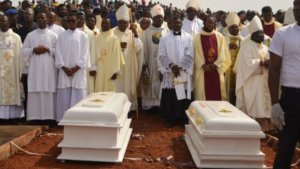5.5 million people displaced across Borno, Adamawa and Yobe-United Nations Office for the Coordination of Humanitarian Affairs (OCHA).
Since 2009, Boko Haram has killed tens of thousands of people and displaced millions in northeast Nigeria, creating one of the world’s worst humanitarian crises. Last year, the Borno government unexpectedly announced the closure of IDP camps, especially in Maiduguri, and began sending people back to their home towns as part of a stabilisation programme. So far, this has affected more than 200,000 IDPs.
“Stabilisation provides security,” Borno governor Babagana Zulum says. “The first component of stabilisation is to provide security, then infrastructure and livelihood – all these three components are geared to addressing the root causes of the insurgency – which are not limited to illiteracy, poverty and infrastructure deficit.”
The UN Development Programme (UNDP), in partnership with the Nigerian government at state and federal levels, is now looking to resettle IDPs across northern Nigeria and the Lake Chad region.
Ngarannam, abandoned in 2015 after the Boko Harm raid, is among one of the communities benefitting from this initiative. Construction started in 2020 and the first phase finished in 2022. In October, people began to return. The second phase is expected to be completed in 2024.
The project’s first phase comprises 360 two-bedroom houses equipped with energy-efficient stoves and a bathroom and toilet. There is a police outpost and residential quarters, primary school and teachers’ accommodation, a dispensary, market, a social area, and a water tower for a solar-powered bore.
The homes are expected to shelter 2,160 people.





